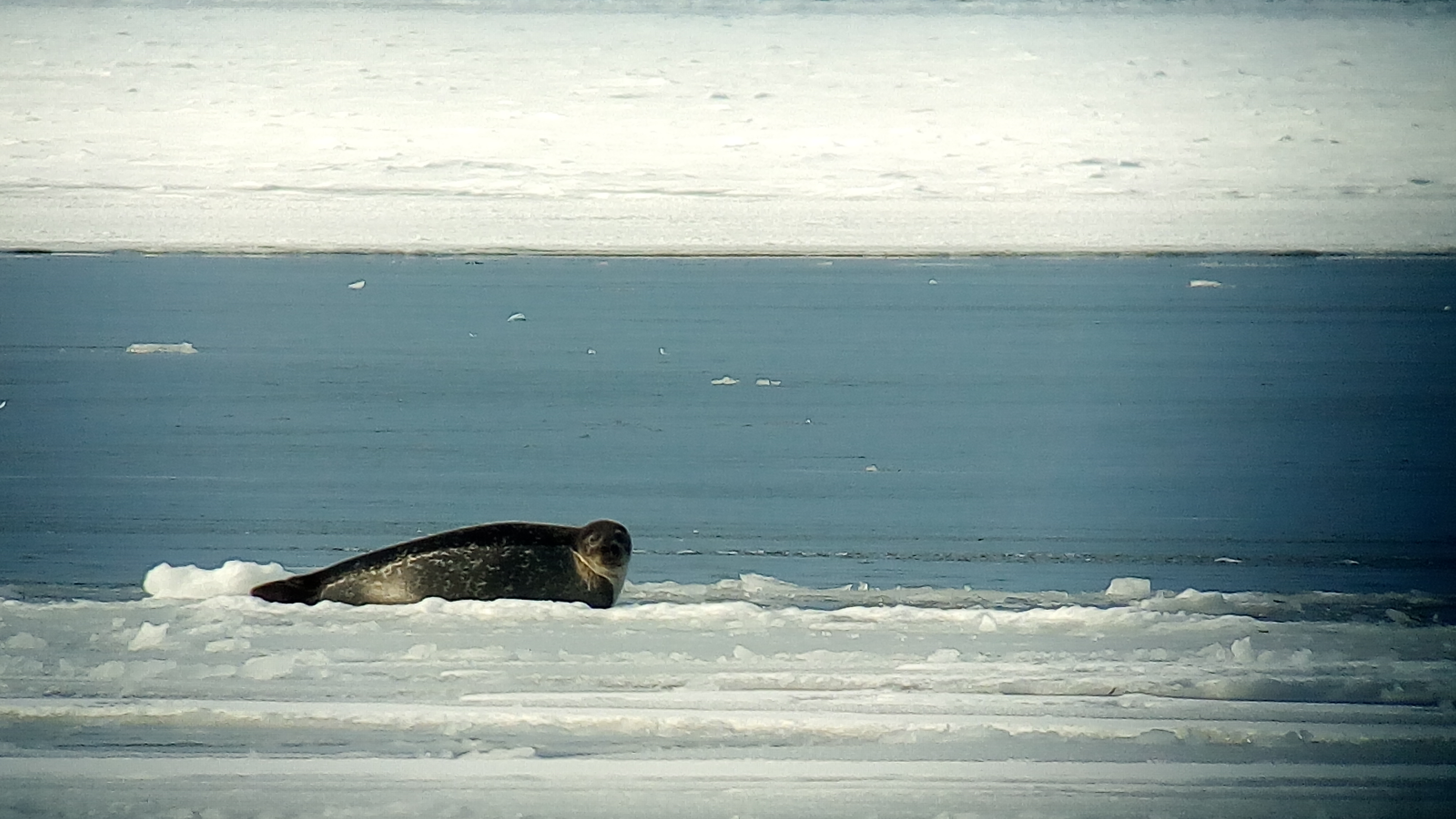No backs, no spouts, not even the shadow of a tail. Zero, zip, zilch. “No whales this week,” a number of observers have confided to me. So, instead of talking with me about cetaceans, those who keep their eyes on the River are commenting about the ice. Over the past few weeks, a white sheet has formed on the waters of the St. Lawrence and continues to spread thanks to successive cold waves.
In Franquelin, “The ice stretches for kilometres; I can’t even see where it ends,” points out one of the locals. And as long as there is ice, I won’t be able to see anything offshore!” A little farther downstream, one observer points out: “This is the first time since the start of winter that Baie Sainte-Marguerite between Sept-Îles and Port-Cartier is completely locked in ice.” Gaspé Bay, too, has practically come to a complete standstill in Old Man Winter’s stranglehold. It seems that this significant ice cover stretching all along the shores of the St. Lawrence was to be expected, if we go by the report published in early December by the Canadian Ice Service of Environment and Climate Change Canada.
Ice cover with multiple benefits
Combined with the harsh winds and the sea smoke that rises from the last remaining open patches, ice is hardly favourable for scanning for whales on the River. Paradoxically, whale enthusiasts tend to get excited about it. That’s because everything leads us to believe that the formation of ice is not only useful, but actually essential to the St. Lawrence ecosystem. More specifically, it protects the coasts from erosion, provides a safe place for harp seals to give birth to their pups, and contributes to the fertility of the water.
“The ice cover weighs down on the upper layers of the water column and pushes the oxygen-laden surface waters toward the bottom,” explains amateur oceanographer Jacques Gélineau. “To put it a different way, ice formation on the St. Lawrence leads to changes in the currents, which facilitates better oxygenation and cooling of the intermediate and lower layers of the water. Come spring, this ice will also allow for a release of nutrients and promote vertical exchanges within the water column. In short, this winter ice cover is good news for the productivity of the St. Lawrence, especially in terms of krill production.” Could this ripple effect attract more blue whales, after a rather lackluster year for these giants of the seas? In any case, that’s what our collaborator believes.
2021: a year without ice
Unlike this year, last winter was particularly mild, with little or no ice forming on the St. Lawrence. Such a phenomenon has only occurred 5 times since scientists began keeping records: 1958, 1969, 2010, 2011 and 2021. The mild winter and the absence of ice in 2021 had significant consequences on erosion and biodiversity, in addition to and especially contributing to abnormally high temperatures (all articles in French) and poorer oxygenation in the intermediate and deep layers of the water column. Researchers are concerned that this kind of record year is likely to recur with increasing frequency. This is why the ice in these first few weeks of 2022 is being welcomed with a sigh of relief.
Ice cover data can be viewed on the St. Lawrence Global Observatory (in French) or Environment Canada websites.
Seals and documentaries
It’s definitely been a quiet week for whales. But just because cetaceans are absent doesn’t mean we can’t enjoy watching pinnipeds instead. At Cap de Bon-Désir in the town of Les Bergeronnes, photographer Renaud Pintiaux caught the silhouette of a harbour seal. A few harbour seals were also reported in Gaspé Bay, “in the little bit of open water left,” while in Saint-Yvon, it’s dead calm… “Not even a little snout poking above the water!” laments one of our observers. In Longue-Pointe-de-Mingan and Sept-Îles, we received report of harp seals resting on the ice.
And, if you can’t see any whales in winter, Jacques Gélineau suggests an alternative solution: keep talking about these giants and their habitat. In fact, Jacques is taking advantage of the off-season to work on an upcoming show for the television network NousTV. The topic? The Gulf of St. Lawrence, of course!
Do you have an observation to share? Write to us!
Have you seen a marine mammal in the St. Lawrence? Share your sighting and photos with the Whales Online team and its readers by writing to us at [email protected]







